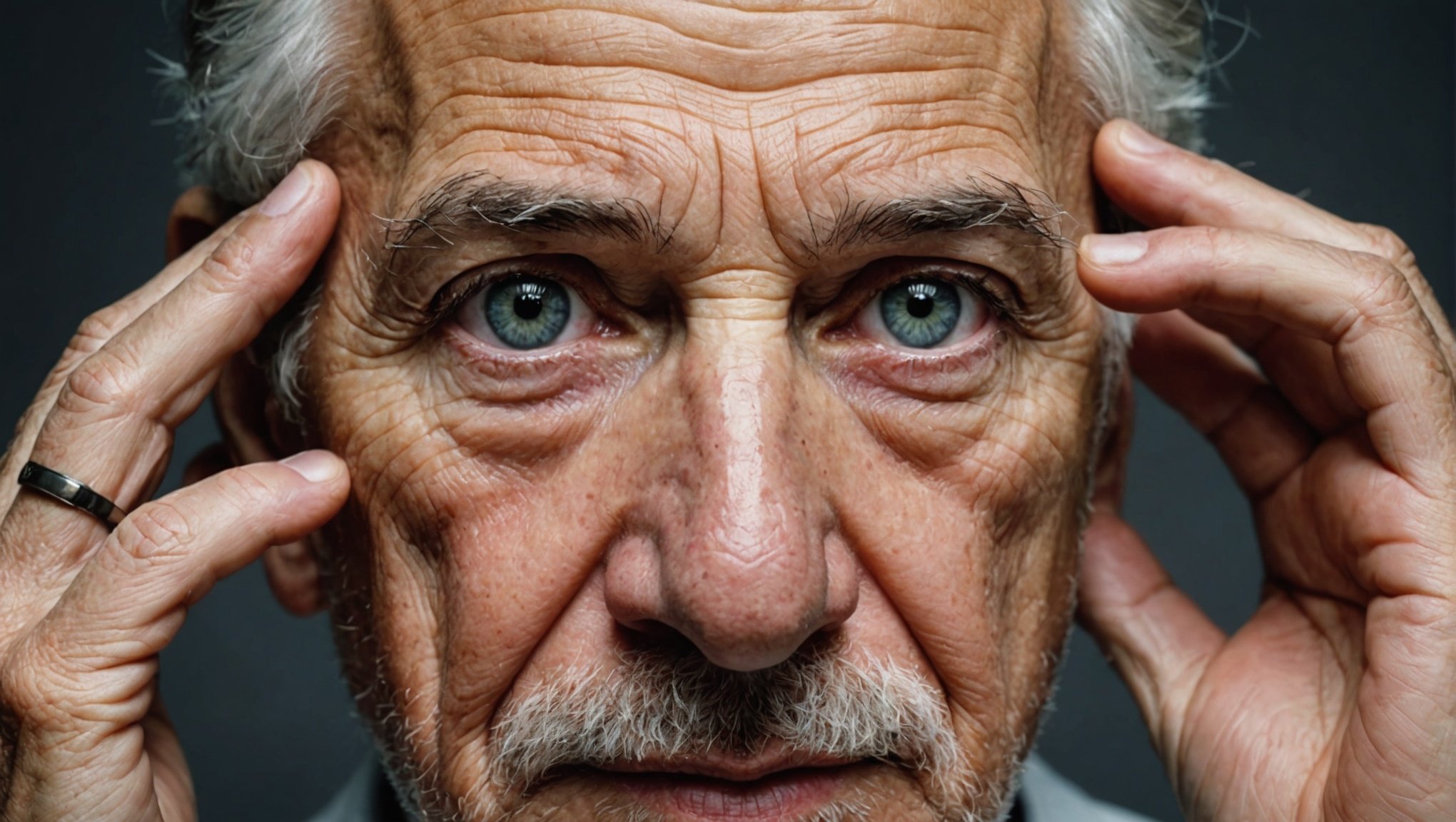The shocking reality is that macular degeneration is a leading cause of vision loss among people aged 50 and older. It affects more than 10 million Americans — more than cataracts and glaucoma combined. This disease attacks the macula, the part of your eye that allows you to see details clearly in the center of your field of vision.
The deterioration of the macula can result in symptoms such as blurred vision, dark spots in your vision, and straight lines appearing curved or distorted, which can significantly interfere with everyday activities.
Also to read : Boosting Senior Fitness: The Role of Interactive Video Games in Encouraging Physical Activity
The causes of macular degeneration are complex and include both heredity and environment. However, age is a predominant risk factor—thus the name, Age-related Macular Degeneration (AMD). But fear not, there are several therapies and treatments that have proven to be highly effective in slowing the progression of this disease and in some cases, improving vision.
Understanding Age-Related Macular Degeneration
Age-related Macular Degeneration (AMD) is a chronic eye disease that causes loss of the sharp, central vision you need for activities like reading and driving. AMD affects the macula, the part of the eye that gives you sharp, central vision.
This might interest you : What Are the Latest Guidelines for Managing Hypertension in Seniors Aged 75+?
There are two types of AMD: dry (non-neovascular) and wet (neovascular). The “wet” type occurs when abnormal blood vessels behind the retina start to grow underneath the macula. These vessels often leak blood and fluid, which can lead to scarring of the macula and rapid, severe losses in central vision.
AMD: The Clinical Picture
Your doctor may suspect AMD if you are over age 60 and have had recent changes in your central vision. But, to diagnose AMD, a retinal specialist or ophthalmologist will conduct a comprehensive eye exam that includes a visual acuity test, a dilated eye exam, and the use of several imaging tests.
One of these tests is optical coherence tomography (OCT), which provides cross-sectional images of the retina that show the thickness of the retina, helping to determine the presence of disease. Another commonly used test is fluorescein angiography, which involves an injection of dye into a vein in the arm. The dye travels through the blood vessels in the eye, making them easily seen on the images taken.
Treatment Options for Wet AMD
In the case of wet AMD, the goal of treatment is to reduce the severity of vision loss and try to restore as much sight as possible. Currently, the mainstay of wet AMD treatment is therapy with anti-vascular endothelial growth factor (VEGF) drugs.
Once injected into the eye, these drugs block the effects of VEGF, a protein that promotes the growth of abnormal blood vessels in the macula. By blocking the effects of VEGF, these drugs can slow the progression of wet AMD and, in some cases, improve vision.
The three anti-VEGF drugs that doctors often use are Ranibizumab (Lucentis), Bevacizumab (Avastin), and Aflibercept (Eylea). These drugs require regular injections into the eye, generally every 4-12 weeks.
Treatment Options for Dry AMD
For dry AMD, the most common type of macular degeneration, treatment options are a bit different.
Nutritional supplements have been shown to slow the progression of dry AMD. A large clinical trial found that a specific high-dose formulation of antioxidants and zinc significantly reduced the risk of advanced AMD and its associated vision loss. This formulation is often referred to as the AREDS or AREDS2 formula, named after the Age-Related Eye Disease Studies that provided the clinical evidence for its use.
A new treatment approach that has shown promise in clinical trials involves the use of a laser therapy called photodynamic therapy (PDT). In PDT, a light-activated drug is injected into a vein in the arm. The drug travels to the vessels in the eye, and when activated by light from a laser, it destroys the abnormal blood vessels.
These therapies are generally well-tolerated and can significantly slow the progression of this disease, preserving vision for many people with AMD. However, regular follow-up appointments with a doctor are crucial to monitor the disease’s progression and adjust treatment as necessary.
Coping with AMD and Vision Loss
While there is not yet a cure for AMD, there are numerous resources and strategies to manage the vision loss associated with the disease. Low vision aids, such as special eyewear or magnifiers, can be very helpful. Various kinds of aids and devices are available to help people with vision loss carry out a variety of everyday tasks. These include reading and hand magnifiers, large-print reading materials, and talking or electronic aids for tasks such as telling time and checking blood pressure.
Living with AMD can be challenging, but remember that you are not alone. Seek support from your family, friends, healthcare provider, or a counselor to help you cope. There are also many support groups and resources available for people with visual impairments. It is important to remember that with the right help, you can lead an active and independent life.
Emerging Therapies for AMD
As we strive to combat age-related macular degeneration (AMD), one promising avenue is gene therapy. Gene therapy offers the potential for a one-time treatment that can provide long-term results, rather than requiring ongoing injections or medications.
In gene therapy, a benign virus carrying a normal copy of a gene is injected into the body. This virus makes its way to the target cells, in this case, the eye, where it delivers the gene. This new gene then gets to work producing a protein that the cells need, but was missing or functioning poorly due to the originally faulty gene.
A clinical trial by Biogen, a major pharmaceutical company, demonstrated promising results. The trial involved using a genetically modified virus to deliver a gene that produces a protein similar to the anti-VEGF drugs that are commonly used to treat wet AMD. Preliminary results showed that the gene therapy reduced the need for regular anti-VEGF injections, a significant improvement in the quality of life for those living with wet AMD.
Similarly, a Mayo Clinic study looked into the potential of stem cell therapy for AMD treatment. The research involved injecting stem cells into the eyes of people with advanced AMD. It was found that the transplanted cells could replace damaged cells in the eye, potentially slowing or even reversing vision loss.
However, both gene therapy and stem cell therapy are still in the experimental stages and aren’t yet available as standard treatments for AMD. Despite this, the results from clinical trials are promising and suggest these could be effective therapies in the future.
Conclusion: Navigating Life with AMD
Living with age-related macular degeneration can certainly be a challenge. However, it’s important to remember that a diagnosis does not spell the end of your independence or quality of life.
Multiple therapies and treatments are available to manage both wet and dry AMD, from anti-VEGF drugs and photodynamic therapy to nutritional supplements and low vision aids. In addition, emerging treatments like gene therapy and stem cell therapy provide hope for even more effective treatments in the future.
Regular appointments with your eye doctor are crucial to monitor the disease’s progression and adjust treatment as necessary. It can also be beneficial to familiarize yourself with the Amsler grid, a tool used to detect vision changes typical of AMD. The grid consists of straight lines, with a dot in the center. People with AMD may see the lines as bent or broken.
Most importantly, reach out for support. Whether it’s from friends, family, a counselor, or a support group, don’t be afraid to ask for help. AMD is a journey, and it’s one you don’t have to navigate alone. With the right resources and support, you can preserve your independence and continue to enjoy an active lifestyle.











